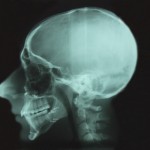
The prevalence of third molar (M3) extractions worldwide is estimate to be around 25% and significant numbers are removed annually. While tooth extraction as part of orthodontic treatment may provide some additional space for eruption holding back or tipping posteriorly permanent molars can decrease posterior arch space.
The aim of this review was to assess the literature related to the effect of orthodontic treatment with tooth extractions on the angular position of M3s.
Methods
Searches were conducted in PubMed, Embase and the Web of Science with no restrictions on language or date of publication. Prospective and retrospective controlled clinical studies of patients undergoing fixed appliance orthodontic treatment involving extraction were considered. The primary outcome was change in angulation of M3s after treatment or in retention.
Two reviewers independently selected studies, abstracted data and assessed study quality. Studies were graded A to C (high to low). A narrative assessment was presented; meta-analysis was not conducted owing to methodological heterogeneity.
Results
- 14 retrospective studies were included.
- None of the studies were considered to be high quality 2 being considered moderate quality and 12 low quality.
- 12 studies involved the extraction of first premolars.
- 3 studies included two group one have first premolars extracted the other second premolars
- 1 study involve first molar extractions.
- 13 studies assessed mandibular M3 angulation, 7 maxillary M3 angulation.
- 9 of the included studies found a significant difference in the extraction group.
Conclusions
The authors concluded
There is limited evidence that orthodontic extractions can substantially enhance the up-righting of M3s. Clinicians should be aware of the potentially beneficial effect of orthodontic extraction treatment on M3 development, although well-designed prospective studies are necessary to strengthen this statement.
Comments
Given the significant health care resources that are expended on M3 removal and orthodontic treatment having a clear understanding of whether orthodontic treatment effects M3 impaction is an important question to be addressed. While the authors of this review have searched 3 major data bases they could only identify a handful of retrospective studies. The included studies are small with 14 studies only including a total of 542 patients (range 16-106 per study) . The authors also note that “ Most studies failed to provide a full description of malocclusion, anchorage needs, and appliances used. The patients are also relatively young there is a lack of clarity over the observation period, and the lack of follow-up measurements. Given the problems identified by the authors and the retrospective nature of the studies I would suggest that the quality of the available evidence was very low. So high quality well conducted and reported prospective studies are needed.
Links
Primary paper
Livas C, Delli K. Does Orthodontic Extraction Treatment Improve the Angular Position of Third Molars? A Systematic Review. J Oral Maxillofac Surg. 2016 Nov 4. pii: S0278-2391(16)31068-0. doi: 10.1016/j.joms.2016.10.035. [Epub ahead ofprint] Review. PubMed PMID: 27893967.

[…] post Orthodontic extractions and third molar angulation appeared first on National Elf […]
Hi Derek, Great research of M3 extractions and orthodontic treatment. Still agree that well conducted, high quality studies are needed.
Thanks for sharing us.